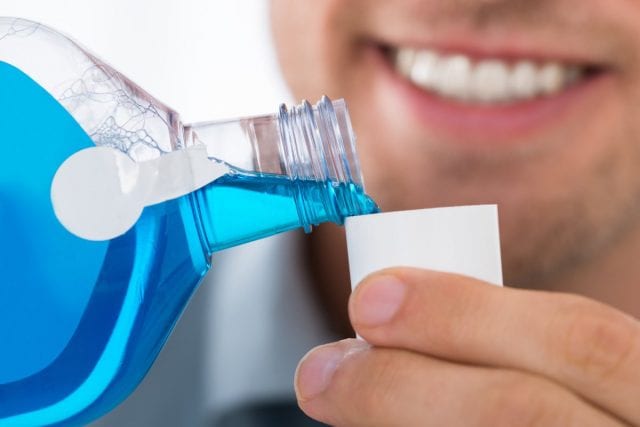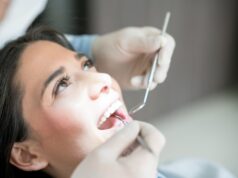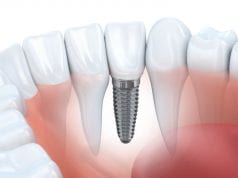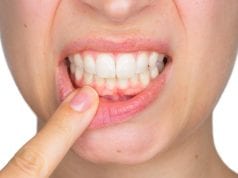
Every year I make my ritual visit to my local dentist for a routine cleaning, and every year I get the “you should really be using mouth-wash” speech.
And every year I get sent home with my bag of dental goodies, including a little bottle of Crest mouthwash.
OK, I get it.
Mouth-wash now must become an important part of my teeth-cleaning-routine. After four years in braces and becoming a mother (something about the hormones affecting teeth enamel) – My breathe can sometimes be indescribable.
As I’ve recently relaunched my payday loan site SimplePayday I have been having lots of meetings and face-to-face time with lenders. Face-to-face means mouth-to-mouth, so I have been catching a few queasy pongs coming from the other side of the table also.
But with my title of champion of all things organic, natural and non-toxic, I have to do what I know is right – “read the label.”
If you’ve never taken the time to read the label on your mouth-wash, you may be shocked, as I was, to learn about some extra unwanted ingredients that are not all that great for your teeth OR your health in general. Here is a list of ingredients (mostly un-pronounceable) directly from my Crest Pro-Health bottle of alcohol-free mouthwash:
Active Ingredients
- Cetylpyridinium chloride: according to Environmental Working Group’s Human Toxome Project this main ingredient is a “Pesticide, antibacterial agent; causes skin irritation, lesions, eye irritation, allergy; in animals, also linked to respiratory irritation, neurotoxicity.“
Inactive Ingredients
- Water
- Glycerin: A good solvent and pretty harmless to skin when diluted.
- Flavor: This can mean a myriad of things but generally used to indicate a taste or aroma has been added. This can also be used to mask multiple chemical ingredients. If it’s natural… why not just say so.
- Poloxamer 407: According to Tom’s of Maine, this is “Derived from natural gas and oil, Poloxamer 335 and 407 belong to a category of ingredients generally known as surfactants” which “make it possible for oil-based ingredients to be dissolved into a water-based solution.” Another negative – it’s a derivative of a non-renewable resource.
- Methylparaben and Propylparaben: Parabens are a huge no-no in the world of natural health, beauty and personal care products. These are used as antifungal and antibacterial agents and used as a preservative. Also found as Ethylparaben, Methylparaben, Butylparaben. According to OrganicConsumers.org, Parabens have been found in extensive testing of “the chemical form of the Parabens found in 18 of the 20 tumors tested indicated that they originated from something applied to the skin, the most likely candidates being deodorants antiperspirants, creams, or body sprays.”
- Sodium saccharin: In low doses as found in mouthwash, this is relatively harmless. According to the Environmental Working Group, the safety scores are less than great.
- Blue 1: Added for the blue hue of course.
How to Make Your Own Mouthwash
So, now that you are running scared let’s take a look at another alternative -making your own mouthwash that will do the job, minus the toxic twist. Using mouthwash is great for your gums and keeps your breath minty fresh (as well as making you more pleasant to be around!). There are some amazing natural ingredients that can do the job of the conventional brand.
The Ingredients
Warning: This recipe contains alcohol, so please do not give to children. Check with your child’s dentist to find a natural, alcohol-free alternative.
- 6 tbsp of high proof vodka
- 10 drops of peppermint (or fennel) oil
- 2 drops of organic lemon juice
- 1 drop of thyme (or chamomile) essential oil
Directions
Pour the alcohol into a clean sterilized glass bottle or jar, add the essential oils one at a time, shake well. Make sure to label the bottle clearly “Mouth Wash.” For each use, add a few teaspoons to a glass of warm water and stir well. Store in the refrigerator for longer shelf-life. Enjoy!








